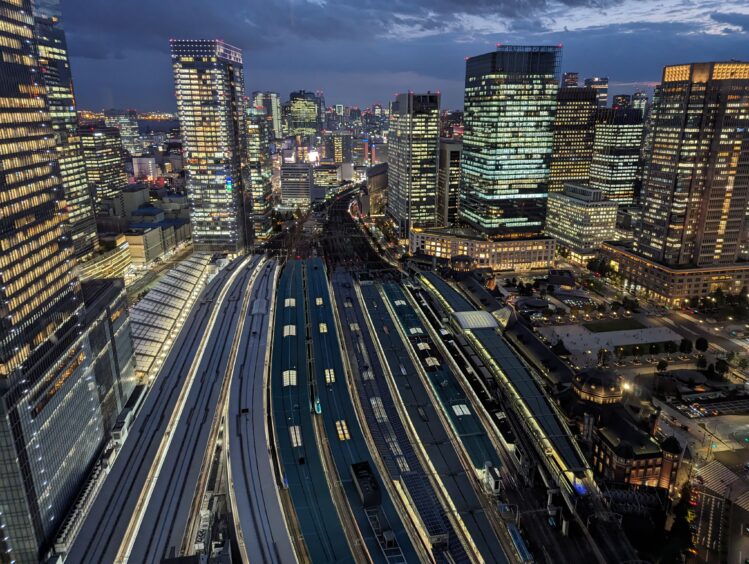
By Inga Aksamit
All photos by Inga Aksamit
Hokkaido, the northern island in Japan, drew me with visions of lofty peaks, wide open spaces, and abundant natural beauty. I wasn’t disappointed. There are beautiful hikes for days and lots of solitude. We only made it to one national park among the embarrassment of riches in *six* national parks (seven, if you include a quasi-national park) on this island alone. A week in Hokkaido, Japan using public transportation allowed us to relax without the hassle of navigating. It wasn’t enough, naturally, but it gave us an excellent introduction.
This was only one part of a month-long journey in Japan. Here, I’ll lay out an itinerary for a week that includes Tokyo and Hokkaido. We prefer slow travel, but flying is an option if you’d rather maximize your time sightseeing or hiking in Hokkaido.

Hokkaido enjoys a brief summer season, when it is cooler and drier than southern Japan. July through September are ideal months for hiking. Winter brings cold temperatures, snow, and snow sports, including cross-country and downhill skiing and snowshoeing. We were there the first week of October, when the leaves were starting to turn, temperatures were cool in the mountains, and we dodged light rain. Ten days later, they got their first snow, and with that, the hiking season was over.
Below is an example of a one-week itinerary compared to our actual itinerary, which stretched things out with a few days in Tokyo, two nights in Sapporo and three nights at Asahidake.
Note that flying to Hokkaido can shorten transit times. Airports are located in Sapporo and Asahikawa, as well as other locations. A rental car allows for more flexibility. Remember that you must have an international driver’s license to rent a car in Japan.
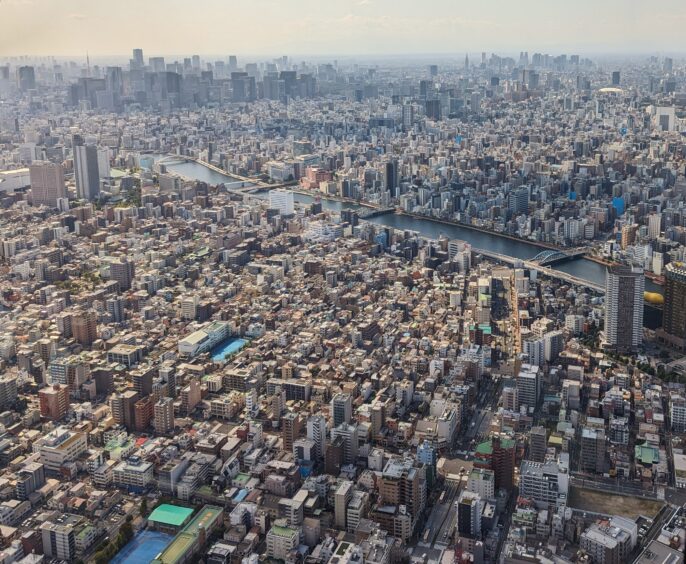
Like most travelers, we landed first in Tokyo, bleary-eyed and jet lagged after flying from the US. We spent a few days sightseeing in Tokyo, but I’ll cover those details in another article. This wasn’t on purpose, but staying at the Hotel Metropolitan Marunouchi (a JR, as in Japan Railways, property) at the Tokyo Train Station turned out to be very convenient.
We were able to return to one of the Japan Rail (JR) offices at the train station the next morning, after a good night’s sleep, to exchange our Japan Rail voucher for the tickets with a QR code that provided entry onto the train. This must be done in person and requires your passport. Reservations were secured for the Green car on the Shinkansen train (high-speed bullet train), which is the first class version of the train, with spacious, comfortable reclining seats. We selected the seats and time we wanted for the Hakodate, Hokkaido Shinkansen line, which is as far north as the Shinkansen line goes. Eventually (around 2030), the Shinkansen line will go to Sapporo.
Japan Rail Passes are convenient but, shortly after our visit, they went up significantly in price. Be sure to compare the cost of a rail pass to the price you’d pay for individual trips to see if it’s cost effective. It may even be less expensive to fly, but for us, traveling on the high-speed train was part of the experience we desired. Prices currently range from around $350-685 for a rail pass.
It was fun to roam around the busy train station, which appeared to carry everything a traveler could need from retail shopping, department stores, a Uniqlo store, convenience stores, coffee shops, and a multitude of restaurants. I could have spent all day people watching and window shopping in the station, but after a few hours, we pulled ourselves out to see some other sights.
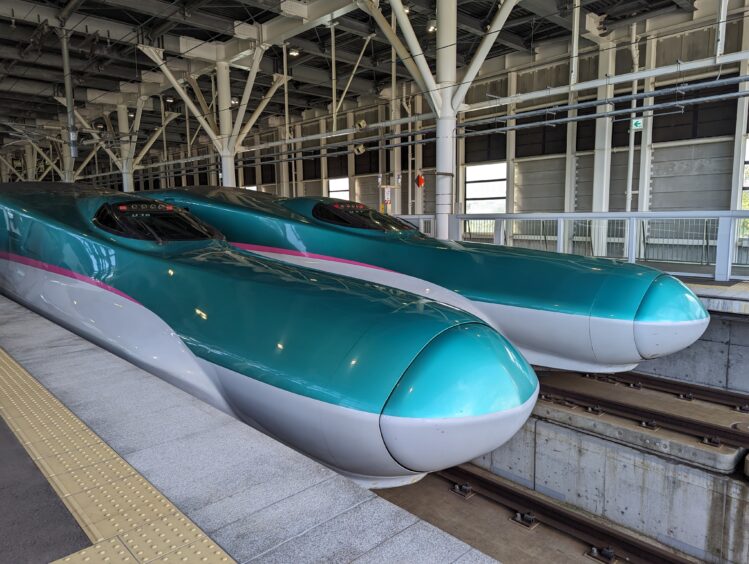
The rail journey to Hokkaido was broken into two parts. The Shinkansen train transported us from Tokyo to the island of Hokkaido in a mere four hours (540 miles), going underwater through the Seikan Tunnel, to Hakodate, a town on the southern tip of the island. From there, we made our way to Sapporo on a regular train, which also took about four hours, though we only traveled 200 miles. That illustrates the convenience of the high-speed train.
Watching the landscape change slowly from urban high rises to single story-buildings nestled between green hills and ultimately, cultivated agricultural lands, seascapes and high mountains on Hokkaido allowed me to transition with the land to a slower pace. Compared to the hubbub of Tokyo, Sapporo was calm and quiet, with wide streets and leafy trees.
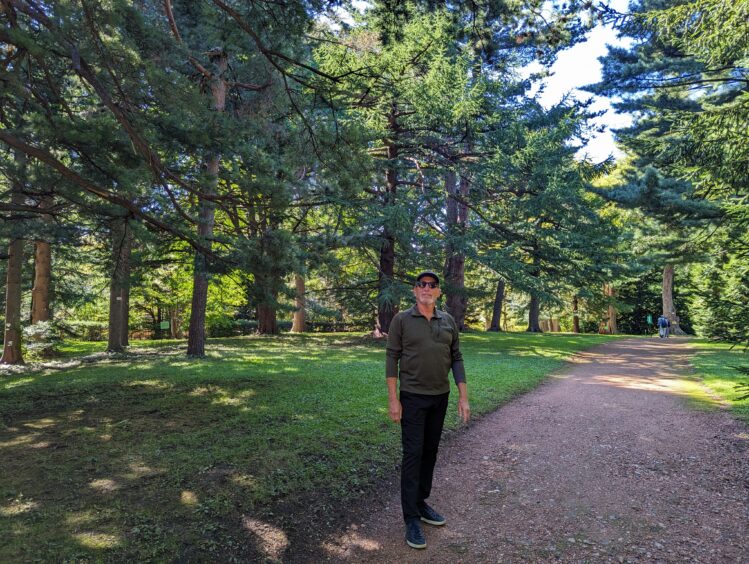
We stayed at the MyStays Sapporo Aspen mid-range hotel near the train station, which was conveniently located near the sights we wanted to see.
Wanting to stretch our legs after the long day of train travel, we headed a few short blocks to the Hokkaido University Botanic Garden, which was tranquil and cool on a warm, late summer day. We enjoyed strolling through the leafy paths and stopping at the two museums on the property to learn about the natural history of Hokkaido and the indigenous Ainu people. Many of the animals, such as deer, badgers, and bears, reminded me of similar animals to be found in mountainous areas of the west coast from California and Alaska, and the displays of Ainu clothing, thatch houses, dogs and dogsleds were reminiscent of indigenous populations in the same region.
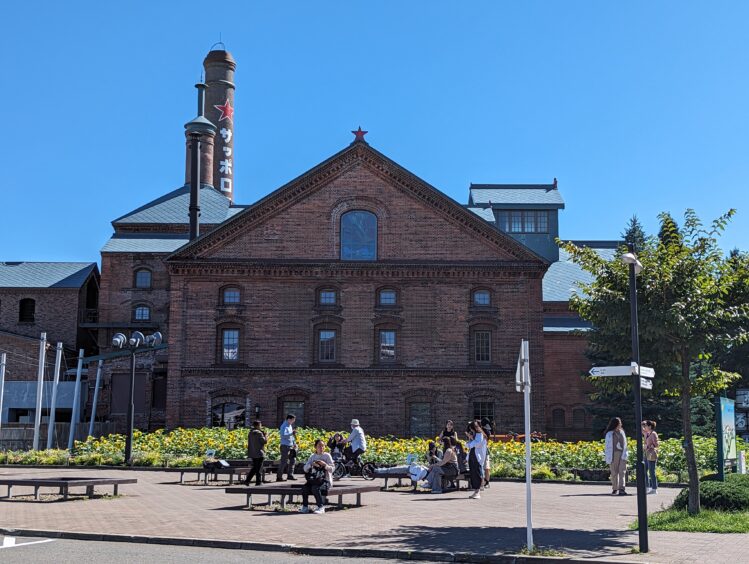
In the afternoon, we walked about a mile to the Sapporo Brewery to take a self-guided tour through the small museum (interpretive signs were available in English and several other languages), did a tasting and had lunch.
The brewery is in a beautiful red brick building that housed the original brewery built in 1876, surrounded by lush lawns and ample trees. The founder, Seibei Nakagawa, trained in Germany to learn the craft, returning to Japan to start the brewery.
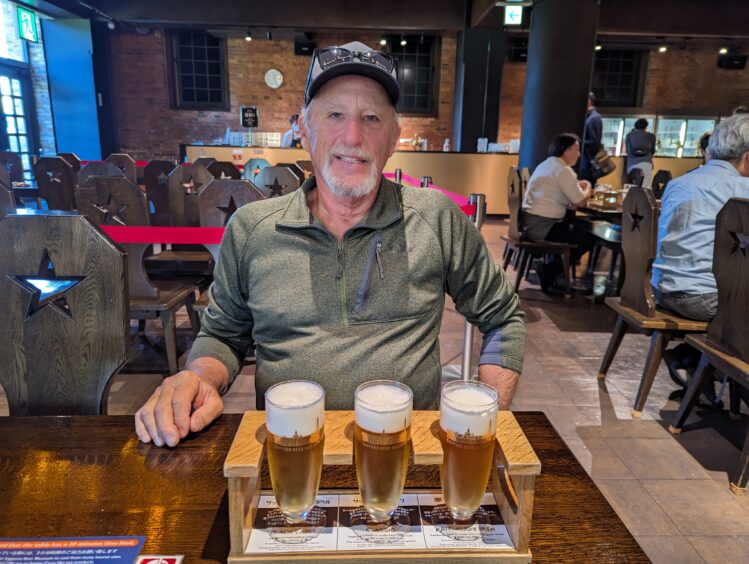
We enjoyed side-by-side tasting of unpasteurized Black Label beer, featuring a fresh malt taste, Classic, made only in Hokkaido with a rich taste and mouthfeel, and Kaitakushi beer, brewed from the same standards as the original brewery, named Kaitakushi Brewery, before it changed names.

We thoroughly enjoyed lunch at the Poplar-kan restaurant, one of the four brewery restaurants that serve the popular local dish known as Genghis Khan. It involves cooking meat and vegetables at each table on a special domed grill that is said to resemble the helmet of the famed warrior. A gas flame under the dome heats the metal so meats can be cooked as the fat drips into a channel where the vegetables roast. The traditional tender lamb was quite tasty, though different meats can be ordered.
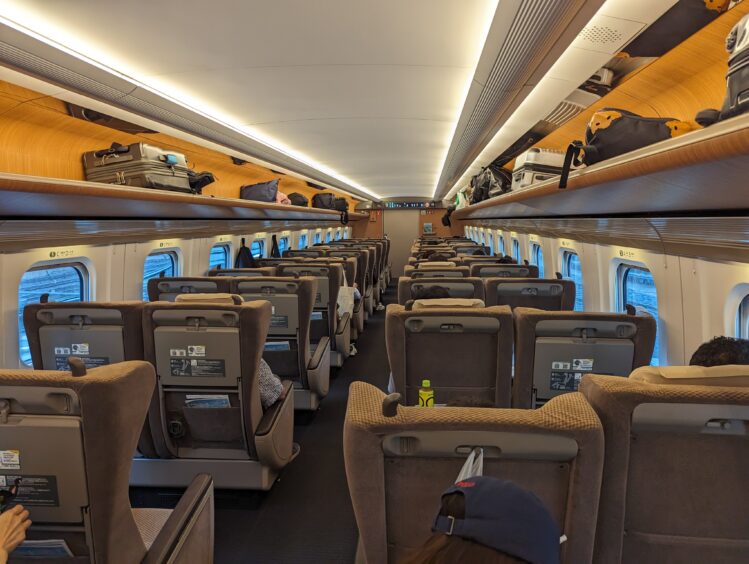
It was hard to decide which national park to visit and which hikes to go on, but once we decided to stick to public transportation, options were simplified. For easy train and bus connections, Asahidake Onsen, a resort town in Daisetsuzan National Park, was a natural destination for lodging. If you want to rent a car, you will have more choices, including such popular spots such as Bei and Furano.
For a seven-day itinerary, I recommend taking the train to Asahikawa in the late afternoon or evening after seeing a few sights in Sapporo. This will put you in position to catch one of the morning buses to the mountain town of Asahidake. There were two morning and two afternoon buses, with the last bus departing around 3:30 pm. Train stops and speeds vary, so the train could take 1.5 to 3 hours.
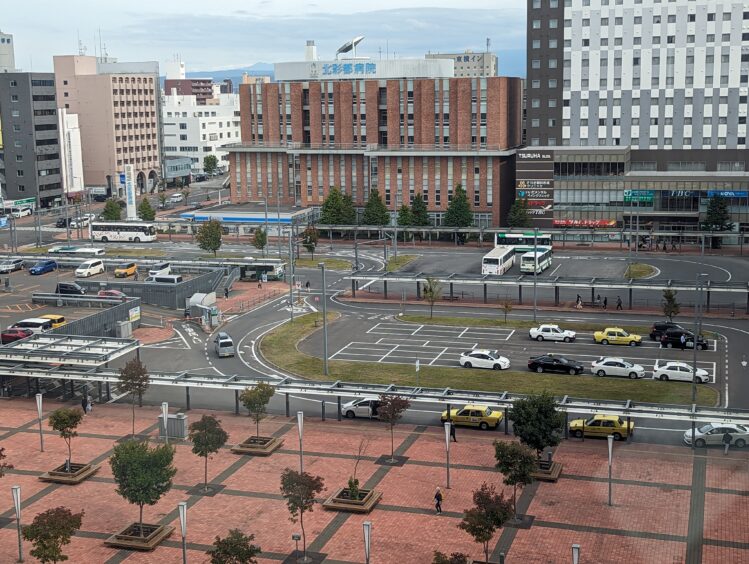
We stayed at the JR Inn Asahikawa adjacent to the train/bus station. This made logistics easy and the mid-range hotel was clean and comfortable, with several restaurants and a multi-level mall adjacent.
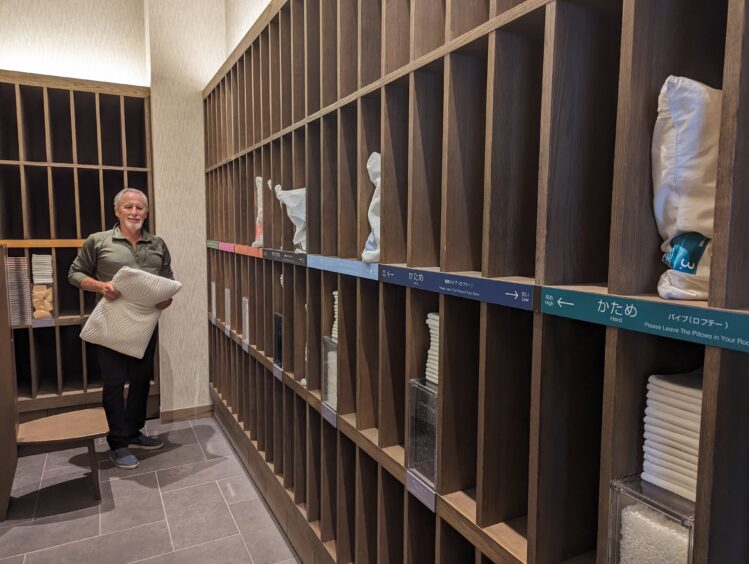
The most impressive feature was the pillow bar, where you could select from a wide variety of pillow stuffing and varying degrees of firmness.
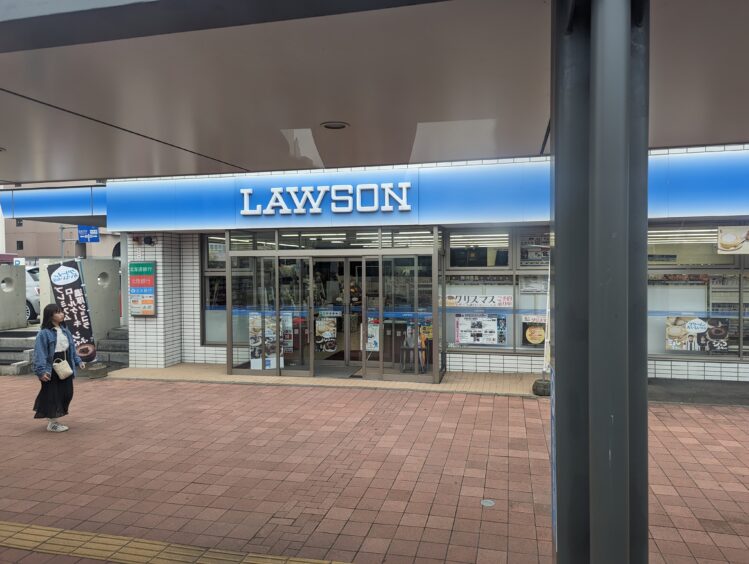
We caught the Ideyu-go bus at the bus station outside the main entrance to the Asahikawa Train Station. The bus stopped in front of Lawson’s convenience store, a familiar chain that is all over Japan. There was a ticket office nearby where we purchased tickets for the bus, but we could have purchased from the bus driver. The bus also stopped at the Asahikawa Airport, which would be convenient for those who want to fly from Tokyo.
The scenery changed from cultivated cropland and small towns to thick forests of fir and spruce once we entered Daisetsuzan National Park and began ascending to higher elevations.
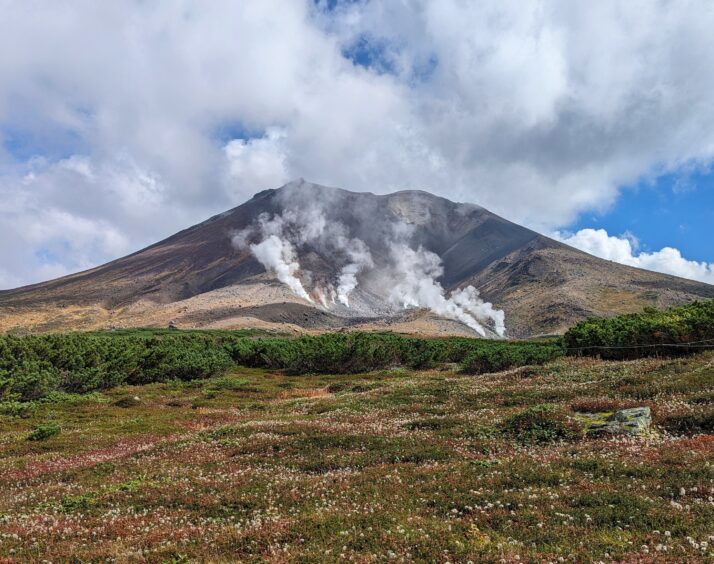
Asahidake Onsen is a hot springs resort sited on the flanks of Mt. Asahidake at Disetsuzan National Park at 3,600 feet. In this setting, onsen has three meanings. It refers to the Asahidake hot springs town, onsen hotels with communal pools, and the the natural, undeveloped Nakadate hot spring on one of the hikes. The town has few services other than lodging and the Asahikdake Ropeway (cable car) that transports visitors part way up the mountain.
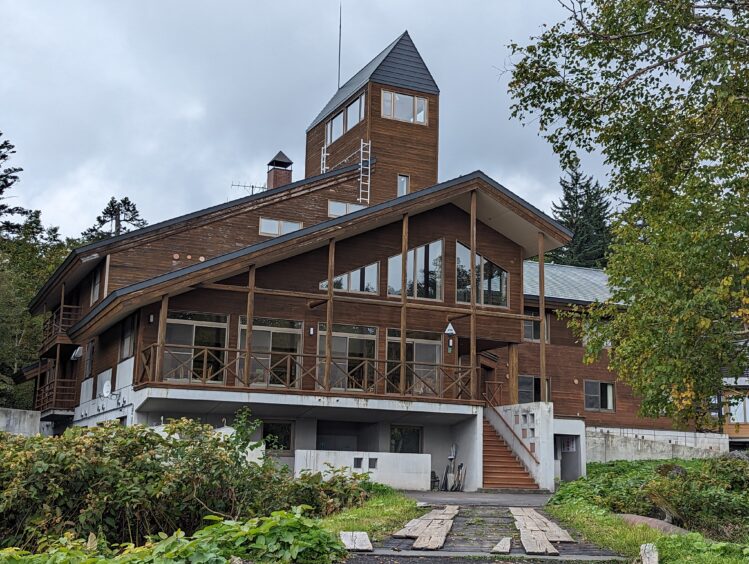
Our onsen hotel, Daisetsuzan Shirakaba-so Ryokan, was a rustic, traditional Japanese inn. We chose traditional rooms, though they had Western rooms available with regular beds. We found the futon mattress on tatami mats and low furniture to be charming, but quite firm.
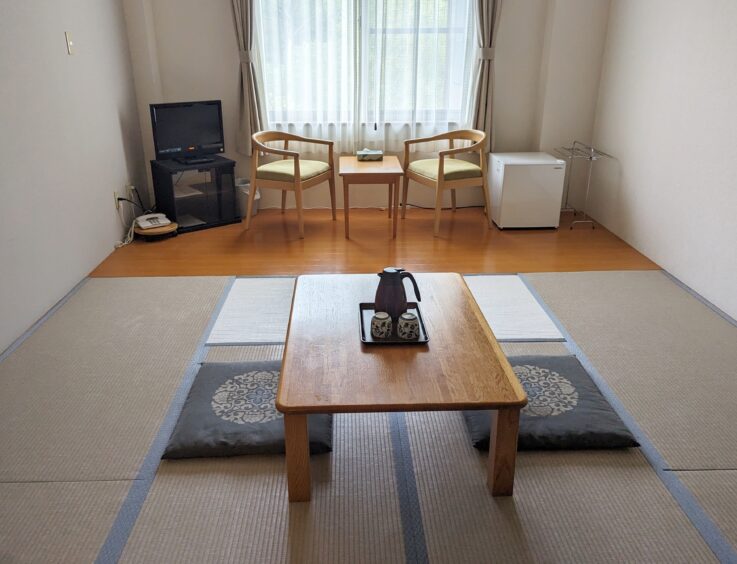
Bathrooms with sinks and toilets were shared, while bathing was done in a communal setting at the pools (the onsen part). Fortunately, there was a set of written instructions about proper onsen etiquette in the room and posted at the hot springs area so we knew where to place our clothing when we disrobed, to take a shower with the handheld nozzle before entering the pool, and to enter slowly—the water was boiling hot.
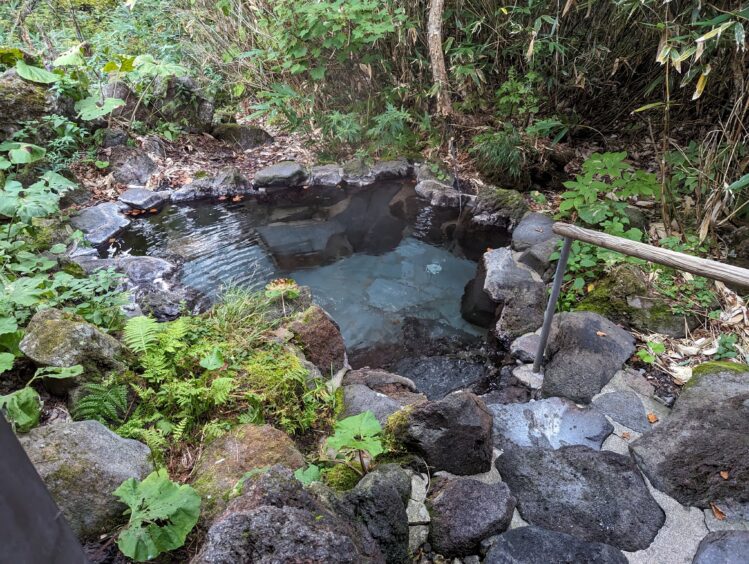
The indoor pool was steamy, and I appreciated the contrast with the cool temperatures of the outside air at the outdoor pool.
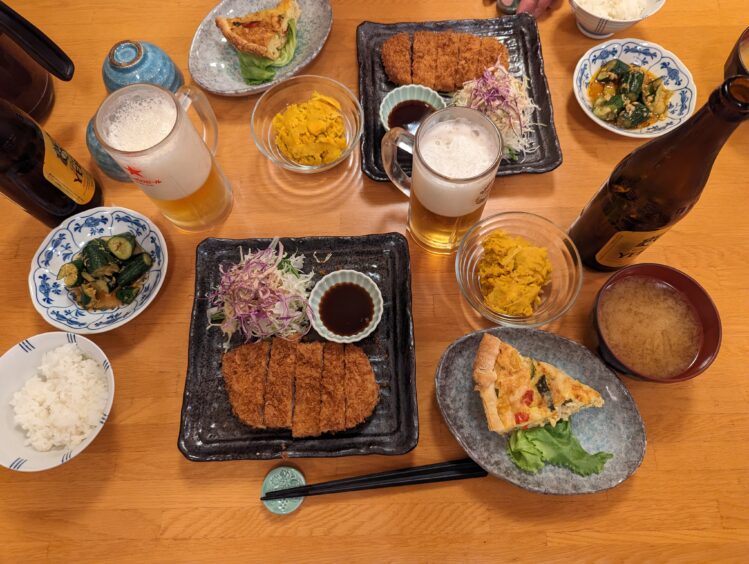
Breakfast and dinner were included at the ryokan and were at 7:00 AM 6:00 PM sharp. The kitchen was closed between meals. The traditional Japanese dinners were appetizing and filling, a typical meal consisting of katsu (breaded cutlet), rice, shredded cabbage salad, pickled vegetables and kabocha (Japanese squash) and quiche. Beer was available for purchase.
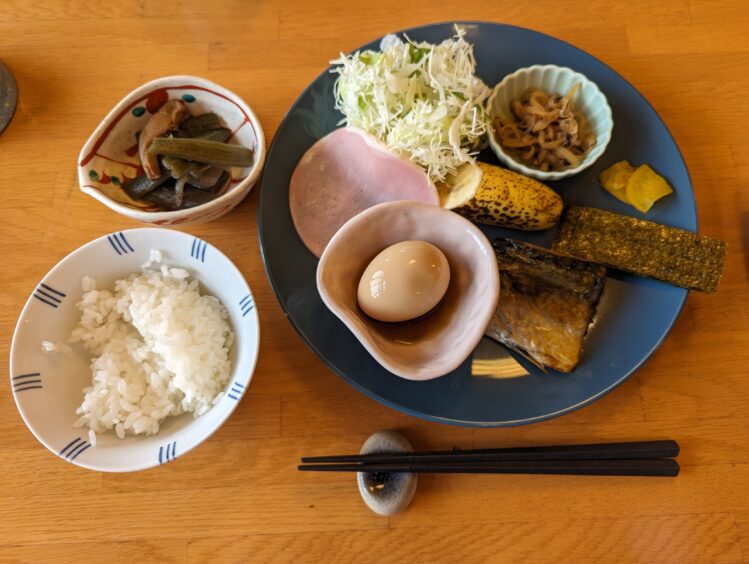
Breakfast included an egg, grilled mackerel or salmon, cured meat, rice, small piece of fruit, and multiple side dishes.
We did three hikes, which are detailed in a separate article.
We returned to Tokyo by reversing our travel, though we didn’t go through Sapporo again. We took the bus to Asahikawa, then the train to Hakodate and stayed overnight at the JR Inn Hakodate. The next morning, we caught the Shinkansen high-speed train back to Tokyo.
Most of these can be booked on Booking.com or other platforms.
A week in Hokkaido, Japan using public transportation is perfect for exploring Sapporo without the hassle of driving. The hiking at Daisetsuzan National Park was inspiring and I could easily spend a month (or more) exploring all the parks.
 Previous Post
Previous Post

Nonstop Cindy says:
Love this article. The foods look great and what beautiful scenery. Appreciate all the detailed logistics info.
Bridget says:
Would these activities and hikes be suitable for a family? We love bushwalking and nature. Our kids are 10 and 8.
Inga Aksamit 2 says:
Yes, it’s quite safe to travel around Hokkaido and there are various different hikes you can choose from.